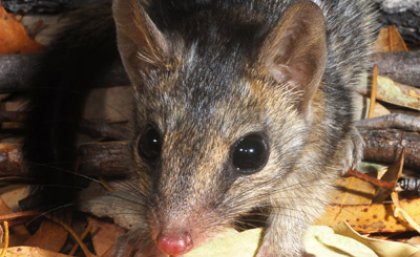
Australia’s tropical mammals are in trouble, with a quarter of species suffering serious decline since 1970, and the devastation evident in iconic areas such as Kakadu National Park.
A team led by University of Queensland researcher Dr Diana Fisher blames the bulk of the decline on feral cats, and highlights savanna management as a likely key to tropical mammal survival.
Dr Fisher, from UQ’s School of Biological Sciences, said the international team of collaborators from universities and conservation agencies looked at the characteristics of threatened marsupials and their habitats throughout Australia.
“We found that disappearing tropical mammals are small, with an average weight of about a kilogram— the size of prey that cats hunt,” Dr Fisher said.
“Declining species live in dry savanna grassland and woodland, which is widespread across northern Australia.
“Small mammals are increasingly exposed to predators in our tropical savannas because of very frequent fires and grazing, which removes vegetation and fallen timber that they rely on for shelter.”
Dr Fisher said the removal of shelter exposed small mammals such as northern quolls to feral predators.
“Rainforest species are generally safe because they are in dense, intact vegetation,” she said.
Dr Fisher said foxes had wiped out larger species in exposed and damaged habitats in southern Australia, but didn’t thrive in tropical areas.
But feral cats had been established in the tropics for 100 years.
Declining tropical Australian mammals identified by the Dr Fisher’s Australian Centre for Ecological Analysis and Synthesis research group included northern quolls, northern brush-tailed phascogales and brush-tailed rabbit rats.
The research team, which included Sarah Legge of the Australian Wildlife Conservancy, Professor Mike Lawes from Charles Darwin University and Professor Chris Johnson at the University of Tasmania, found that widespread control of feral cats was difficult, but better management of savanna vegetation could improve tropical mammal survival.
Media: UQ School of Biological Sciences ARC Research Fellow Dr Diana Fisher, +61 7 3346 9004 or +61 43 506 6011, d.fisher@uq.edu.au; UQ School of Biological Sciences Communications Manager Tracey Franchi, +61 7 3365 4831, t.franchi@uq.edu.au
The research is published online in an Early View in Global Ecology and Bio-geography http://onlinelibrary.wiley.com/journal/10.1111/%28ISSN%291466-8238/earlyview http://onlinelibrary.wiley.com/doi/10.1111/geb.12088/abstract http://www.aceas.org.au/index.php?option=com_content&view=article&id=64&Itemid=67
About the School of Biological Sciences
Through research undertaken in the School, UQ has been ranked by the 2012 National Taiwan University Rankings in the top five universities globally for research in ecology and environmental biology and in the top 18 universities globally for plant and animal biology. The UQ School of Biological Sciences attracts researchers of world standing in a range of disciplines, with international leaders in many diverse fields. Our work spans the scales of biological organisation, from molecules and cells to organisms, populations, species and communities. With more than 150 researchers working in evolution, global change biology, ecology, aquaculture, animal behaviour, physiology, entomology, zoology, botany, genomics, development and conservation biology, our researchers and graduate scientists are well-equipped to make a real difference in contributing to solving global problems.


